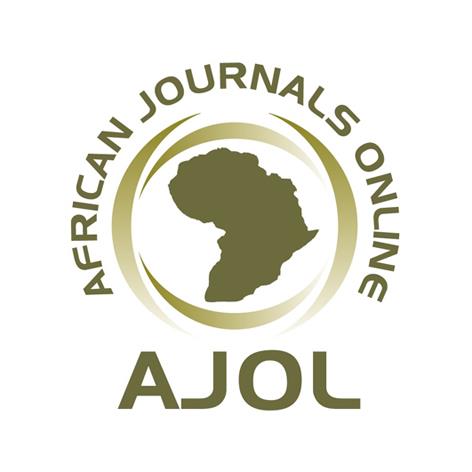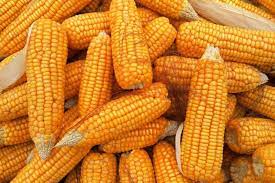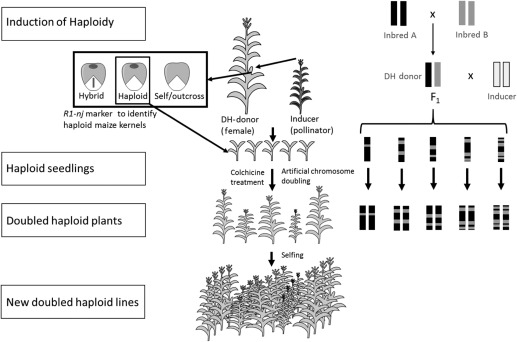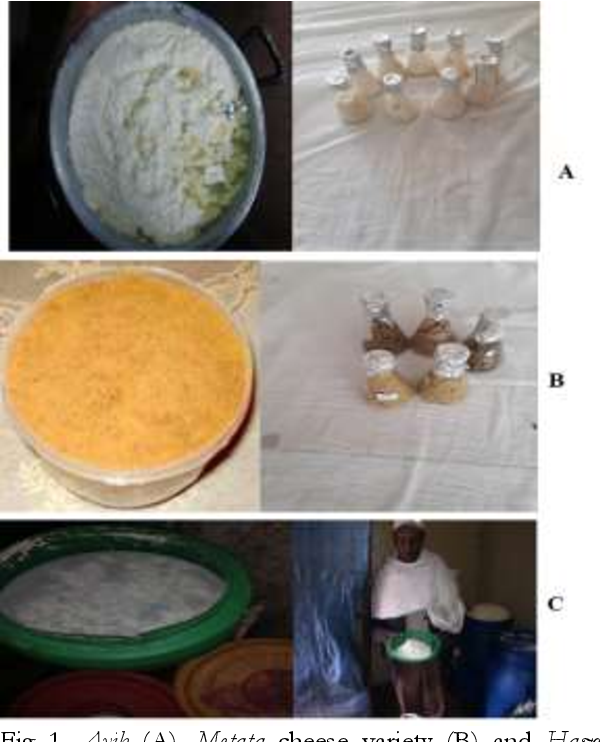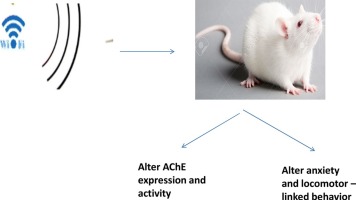Teachers’ Knowledge on Classification and Binomial Nomenclature of Cultivated Plants and Inclusion of the Plants in Current Curriculum in Nekemte Primary Schools, Ethiopia
Downloads
Background: Cultivated plant species have been classified scientifically and named using binomial nomenclature. However, the current level of understanding by primary school teachers on classification and binomial nomenclature of cultivated plants as well as the extents of inclusion of the plants in the school’s curriculum have not yet been explored.
Objective: The objective of this study was to assess how well primary school teachers understand the classification and binomial nomenclature of cultivated plants, as well as how many of these kinds of plants are available in Nekemte marketing segments and included in the curriculum of primary schools.
Materials and Methods: To gather data concerning teachers’ knowledge on classification, binomial nomenclature, and species lists, an exploratory sequential descriptive type design was implemented. A total of 44 teachers from 11 primary schools who were selected at random using the lottery method were participants in the study. Three market segments, few gardens, volumes of Flora books and primary school textbooks were also purposely referred to as data sources. The design followed was exploratory sequential
descriptive type in which qualitative data were collected first followed by gathering quantitative data.
Results: The total species reviewed from Flora, market survey, previous and pilot student textbooks were 112, 99, 50 and 43 respectively. The 99 surveyed plant species were identified under 79 genera, 36 families, 26 orders and two classes. Comparison of mean differences obtained from analysis of variance were found significance at F 0.05 (2, 15) and P = 0.029 as well as at F 0.05 (3, 172) and P = 6.4 x 10−24 for the measured variables.
Conclusion: The study indicated that the sampled participants' knowledge gaps were wide. Only one out of four of them had the necessary knowledge on the topic. Statistical tests proved this finding to be significant at = 0.05. The results imply that actions need to be taken right away by curriculum developers, policy makers, teacher educators and other concerned bodies to reduce the indicated wide knowledge gap.
Abulhamail, A.S., Al-Sulami, F.E., Alnouri, M.A.,
Mahrous, N.M., Johari, D.G., Albogami, M.M.
and Jan, M.M. 2014. Primary school teacher’s
knowledge and attitudes toward children with
epilepsy. Seizure, 23: 280−283.
http://dx.doi.org/10.1016/j.seixure.2013.12.010
Aldhebiani, A.Y. 2017. Species concept and speciation.
Saudi Journal of Biological Science,
http://dx.doi.org/10.1016/j.sjbs.2017.013.
Al−Harbi, A.F., Alsaid, L.A. and Parameaswari, P.J. 2018.
Primary school female teachers’ knowledge,
attitude and practice towards students with
epilepsy in Riyadh, Saudi Arabia. Journal of Family
Medicine and Primary Care, 7(2): 331–336.
Alvi, M.H. 2016. A Manual for selecting sampling techniques in
research. University of Karachi, Iqra. Pp. 40.
Available at
https://www.researchgate.net/publication/3039
Accessed on 09 March 2022.
Alexiades, M.N. 1996. A field manual of collecting
ethnobotanical data: An introduction to basic concepts and
techniques. Institute of Economic Botany, The
New York Botanical Garden. Pp. 53–94.
Amprazis, A. and Papdopoulou, P. 2018. Primary school
curriculum contributing to plant blindness:
Assessment through the biodiversity prospective.
Science Signpost, 3(11): 238‒256.
Borsos, E., Boric, E. and Patocskai, M. 2021. What can
be done to increase future teachers’ plant
knowledge? Journal of Biological Education,
DOI:10.1080/00219266.2021.1909632.
Christenhusz, M.J.M. and Byng, J.W. 2016. The number
of known plants species in the world and its
annual increase. Phytotaxa, 261(3): 201‒217.
http://dx.doi.org/10.11646/phytotaxa.
Costello, M.J. 2020. Taxonomy as the key to life.
Megataxa, 1(2): 105‒113.
Creswell, J.W. and Clark, V.L.P. 2018. Designing and
conducting mixed methods research. SAGE
Publications, Inc., USA. Pp. 138. Available at
https://Iccn.loc.gov/2017037536. Accessed on
November 2022.
Creswell, J.W. 2003. Research design: Qualitative, quantitative
and mixed methods approaches. 2nd edition. SAGE
Publications, Inc., Thousand Oaks, California.
Pp. 256.
Datta, S. 2018. Sampling methods. University of Animal and
Fishery Sciences, West Bengal. Pp. 9. Available at
https://www.researchgate.net/publication/3278
Accessed on 15 August 2022.
Dessalegn Terfassa, Adugna Bersissa and Kasech
Tadesse. 2016. Teacher’ knowledge, attitude and
practices of inclusive education in Nekemte town
and its surrounding government primary schools.
STAR Journal, 5(1): 102–107.
Dawadi, S., Shrestha, S. and Giri, R.A. 2021. Mixedmethods: A discussion on its types, challenges,
and criticisms. Journal of Practical Studies in
Education, 2(2): 25−36.
Education and Training Policy. 1994. Federal Democratic
Republic of Ethiopia, Education and Training Policy. S.
George Printing Press, Addis Ababa, Ethiopia.
Pp. 33.
Edwards, S., Mesfin Tadesse and Hedberg, I., editors.
Flora of Ethiopia and Eritrea Volume 2(1):
Magnoliaceae to Flacourtiaceae. Addis Ababa and
Uppsala. Pp. 532.
Edwards, S., Mesfin Tadesse and Hedberg, I., editors.
Flora of Ethiopia and Eritrea Volume 2(2):
Canellaceae to Euphorbiaceae. Addis Ababa and
Uppsala. Pp. 586.
Edwards, S., Sebsebe Demissew and Hedberg, I., editors.
Flora of Ethiopia and Eritrea Volume 6:
Hydrocharitaceae to Arecaceae. Addis Ababa and
Uppsala. Pp. 586.
Ensermu Kalbessa and Sebsebe Demissew 2014.
Diversity of vascular plant taxa of the Flora of Ethiopia and Eritrea. Ethiopian Journal of Biological
Society, 13: 37‒45.
Ermias Dagne. 2011. Natural database for Africa (NDA) On
CD-ROM Version 2.0. Addis Ababa, Ethiopia.
Ethiopian Education Development Road Map. 2018. An
integrated executive summary. Ministry of Education,
Addis Ababa, Ethiopia. Pp. 101.
Frankham, R., Ballou, J.D., Dudash, M.R., Eldridge,
M.D.B., Fenster, C.B., et al. 2012. Implications of
Different Species Concepts for Conserving
Biodiversity. Biological Conservation, 153: 25‒31,
http://dx.doi.org/10.1016/j.biocon.2012.04.034
Guerra−Garcia, J.M., Espinosa, F. and Garcia-Gomez,
J.C. 2008. Trends in taxonomy today: an
overview about the main topics in taxonomy.
Zoologica Baetica, 19: 15-49.
Harlan, J.R. 1969. Ethiopia: A center of diversity. Journal
of Storage, 23(4): 309‒314.
Hedberg, I. and Edwards, S., editors. 1989. Flora of
Ethiopia Volume 3: Pittosporaceae to Araliaceae. Addis
Ababa, Asmara and Uppsala. Pp. 659.
Hedberg, I., Edwards, S. and Sileshi Nemomissa, editors.
Flora of Ethiopia and Eritrea Volume 4(1):
Apiaceae to Dispsacaceae. Addis Ababa and Uppsala.
Pp. 352.
Hedberg, I, Ensarmu Kalbessa, Edwards, S., Sebsebe
Demissew and Persson, E., editors. 2006. Flora of
Ethiopia and Eritrea. Volume 5: Gentianaceae to
Cyclocheilaceae. Addis Ababa and Uppsala. Pp. 331.
Honey, J.N. and Paxman, H.M. 1986. The importance of
taxonomy in biological education at advanced
level. Journal of Biological Education, 20(2): 103‒111.
DOI: 10.1080/002192266. 1986.9654795.
Kim, H.Y. 2014. Analysis of variance comparing means
of more than two groups. Article in Restorative D
& Endodontics, 74−77.
https://www.researchgate.net/publication/2601
Accessed on 5 July 2022.
Kletecki, N., Hrusevar, D., Mitic, B. and Sorgo, A. 2023.
Plants are not boring, school botany is. Education
Sciences, 13(489): 1−13.
https://doi.org/10.3390/educsci13050489.
Kumar, R. 2011. Research methodology: A step-by-step guide for
beginners. 3rd edition. SAGE Publications Ltd,
London. Pp. 187.
Kusumawardani, W., Muzzazinah, and Ramli, M. 2019.
Plant taxonomy learning and research: A
systematics review. Pp. 1−12. In: AIP Conference
Proceedings. 18 December 2019, Surakarta,
Indonesia. https://doi.org/10.1063/1.5139783.
Larsen, H.O., 2015. Research synopsis guidelines.
University of Copenhagen, Denmark.
https://www.
researchgate.net/publication/279917593.
Accessed on 17September 2019.
Link−Perez, M.A., Doll, V.H., Weber, K.M. and
Schussler, E.E. 2010. What’s in a name:
Differential labeling of plant and animal
photographs in two nationally syndicated
elementary science textbook series? International
Journal of Science Education, 32(9): 1227−1242.
http://dx.doi.org/10.1080/09500690903002818
.
Maguire, E. 2011. Taxonomy in biology and visualization.
Oxford University, USA. Pp. 2.
Mann, P.S. 1995. Introductory statistics. John Weley and
Sons, Inc., New York. Pp. 567−568.
Maskour, L., Alami, A., Agorram, B. and Zaki, M. 2016.
The Eurasia proceedings of educational and social science.
Pp. 294-297. In: International conference on research in
education and science. 19−22 May 2016,
Bodrum/Turkey.
Maskour, L., Alami, A., Zaki, M. and Agorram, B. 2019.
Plant classification knowledge and
misconceptions among university students in
Morroco. Education Sciences, 9(48): 1‒20. Doi:
3390/educsci9010048.
Mesfin Tadesse. 2004. Asteraceae (Compositae). 408p. In:
Hedberg, I., Friis, I. and Edwards, S. (eds.). Flora
of Ethiopia and Eritrea Volume 4(2). Addis Ababa
and Uppsala.
Mulesa, T.H. and Westengen, O.T. 2020. Against the
grain? A historical institutional analysis of access
governance of plant genetic resources for food
and agriculture in Ethiopia. The Journal of World
Intellectual Property. 23: 82−120.
https://doi.org/10.1111/jwip.121442.
Ohl, M. 2014. Principles of taxonomy and classification: Current
procedures for naming and
classifying organisms. Springer-Verlag, Berlin
Heidelberg. Pp. 1−20.
Phillips, S. 1995. Poaceae. 420p. In: Hedberg, I. and
Edwards, S. (eds.). Flora of Ethiopia and Eritrea
Volume 7. Addis Ababa and Uppsala.
Rajasekar, S., Philominthan, P. and Chinnathambi, V.
Research methodology. Electronic address:
rajasekar@cnld.bdu.ac.in. Accessed on 18
September 2019.
Ruggiero, M.A., Gordon, D.P., Orrell, T.M., Bailly, N.,
Bourgoin, T., Brusca, R.C., Cavalier-Smith, T,
Guiry, M.D. and Kirk, P.M. 2015. A higher level
classification of all living organisms. PLoS ONE
(4): e0119248.
Doi:10.1371/journal.pone.0119248.
Singh, I. 2013. Biological classification. Hansraj College,
University of Delhi, Delhi, India. https://www.researchgate.net/publication/3106
Accessed on 1 November 2022.
Small, E. 2009. Top 100 food plants. NRC Press, Ottawa,
Ontario, Canada. 1p.
Spooner, D., Hetterscheid, W., Van Den Berg, R. and
Brandenburg, W. 2003. Plant nomenclature and
taxonomy: An horticultural and agronomic perspective.
University of Wisconsin, Madison. Pp. 29−35.
Stace, C.A. 1989. Plant Taxonomy and Biosystematics.
nd edition. Edward Arnold, A division of
Hodder and Stoughton, London. Pp. 6.
Streich, A.M. and Todd, K.A. 2014. Classification and
naming of plants. The Board of Regents of the
University of Nebraska, Lincoln Extension, USA.
Pp. 1−8.
Taherdoost, H. 2016. Sampling methods in research
methodology; how to choose a sampling
technique for research. International Journal of
Academic Research in Management, 5(2): 18−27.
Thanasekaran, P., Upashe, S.P., and Dereje Chala 2016.
Primary school teacher’s knowledge towards
attention deficit/hyperactivity disorder (ADHD)
and its associated factors in Nekemte town,
Oromiya region, western Ethiopia. STAR Journal,
(1): 76–79.
Thompson, F.C. 2003. Nomenclature and classification,
principles of. Pp. 798−807. In: Resh, V.H. and
Carde, R.T. (eds). Encyclopedia of Insects.
Academic Press, San Diego.
Van der Gulik, P.T.S., Hoff, W.D. and Speijer, D. 2017.
In defence of the three−domain of life paradigm.
BioMedCentral Evolutionary Biology 17(218): 1−5.
DOI 101186/s12862.017.
Verma, A.K. 2020. Relevancy of three domain system of
biological classification in modern context.
International Journal of Biological Sciences, 7(1): 35−39.
Verma, A.K. and Prakash, S. 2020. Status of animal phyla
in different kingdom systems of biological
classification. International Journal of Biological
Innovations, 2(2): 149−153.
Voultsiadou, E., Gerovasileiou, V., Vandepitte, L.,
Ganias, K. and Arvanitidis, C. 2017. Aristotle’s
scientific contributions to the classification,
nomenclature and distribution of marine
organisms. Mediterranean Marine Science, 18(3):
−478.
Walliman, N., 2011. Research methods: The basics. Routledge
Taylor & Francis Group, London and New York.
Pp. 70−72.
Wandersee, J.H. 1986. Plant or animals: which do junior
high school students prefer to study? Journal of
Research in Science Teaching, 23(5): 415−426.
Wheeler, Q.D. 1999. Why the phylogenetic species
concept? ‒ Elementary. Journal of Nematology,
(2): 134‒141.
Zhao, D. and Fan, L. 2022. What is the most important
source for teachers’ knowledge development? A
meta-analysis of 27 empirical studies on sources
of teachers’ knowledge. Best Evidence in Chinese
Education, 10(2): 1375–1393.

This work is licensed under a Creative Commons Attribution-NoDerivatives 4.0 International License.
- I am authorized by my co-authors to enter into these arrangements.
- I warrant, on behalf of myself and my co-authors, that:
- the article is original, has not been formally published in any other peer-reviewed journal, is not under consideration by any other journal and does not infringe any existing copyright or any other third party rights;
- I am/we are the sole author(s) of the article and have full authority to enter into this agreement and in granting rights to Springer are not in breach of any other obligation;
- the article contains nothing that is unlawful, libellous, or which would, if published, constitute a breach of contract or of confidence or of commitment given to secrecy;
- I/we have taken due care to ensure the integrity of the article. To my/our - and currently accepted scientific - knowledge all statements contained in it purporting to be facts are true and any formula or instruction contained in the article will not, if followed accurately, cause any injury, illness or damage to the user.
- I, and all co-authors, agree that the article, if editorially accepted for publication, shall be licensed under the Creative Commons Attribution License 4.0. If the law requires that the article be published in the public domain, I/we will notify Springer at the time of submission, and in such cases the article shall be released under the Creative Commons 1.0 Public Domain Dedication waiver. For the avoidance of doubt it is stated that sections 1 and 2 of this license agreement shall apply and prevail regardless of whether the article is published under Creative Commons Attribution License 4.0 or the Creative Commons 1.0 Public Domain Dedication waiver.
- I, and all co-authors, agree that, if the article is editorially accepted for publication in Haramaya Journals, data included in the article shall be made available under the Creative Commons 1.0 Public Domain Dedication waiver, unless otherwise stated. For the avoidance of doubt it is stated that sections 1, 2, and 3 of this license agreement shall apply and prevail.





